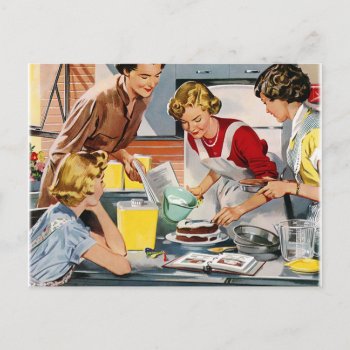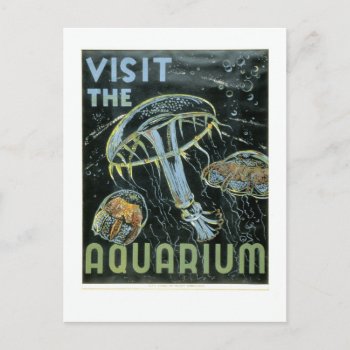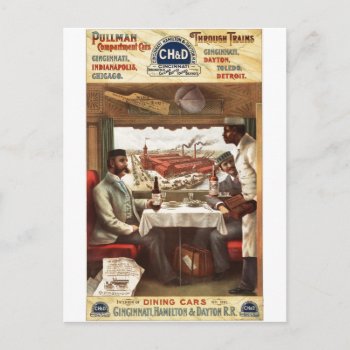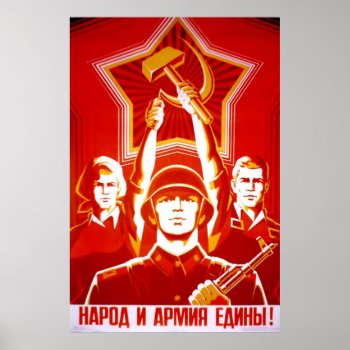Vintage Retro Women Ad Let's Bake a Cake, superb vintage fifties baking advertisement illustration, featuring a 'housewife' frosting a home-made cake while her friends admire.
Continue reading
Tag Archives: ads
Vintage Retro Kitsch Airplane 60s Airline Food Postcard
Vintage Retro Kitsch Airplane 60s Airline Food, today it's 'chicken or pasta', and only on international flights! Wonderful early sixties advertising image featuring a typical airline meal, dig in!
Continue reading
Vintage New York World's Fair 1939 Post Cards
A wonderful old exposition or fair advertisement adorns this item. This would make an exceptional gift for any occasion or holiday. This incredible antique ad shows amazing artistic talent. The 1800s and early 1900s fine art artist and aspiring painters often supplemented his income of selling drawings and painting by creating these unique advertising ephemera. According to French historian Max Gallo, “for over two hundred years, posters have been displayed in public places all over the world. Visually striking, they have been designed to attract the attention of passers-by, making us aware of a political viewpoint, enticing us to attend specific events, or encouraging us to purchase a particular product or service.” The modern poster, as we know it, however, dates back to 1870 when the printing industry perfected color lithography and made mass production possible. “In little more than a hundred years,” writes poster expert John Barnicoat, “it has come to be recognized as a vital art form, attracting artists at every level, from painters to theatrical and commercial designers. Credit: Wikipedia At The Vintage Vamp we obtain high quality images of vintage artwork. Then we use state of the art technology and editing to bring back to life the most compelling images from the past. Unlike a lot of reproductions sold on the Internet, ours have been refurbished to bring out the original colors and fix as many imperfections as possible. We use only PNG format and the largest PPI (pixels per inch) possible, which is the very best for printing. This assures that your image will print with the highest quality possible, no matter what size you choose. Credit: Library of Congress
Continue reading
Visit the Aquarium – WPA Poster – Post Cards
Poster promoting aquariums as places to visit, showing jellyfish. This is a reproduction and has been edited and digitally enhanced to repair flaws, major stains, etcetera. Options such as border sizes, background and border colors, and certain text may be edited and changed if you like. Just click the customize button. This image has been edited to adjust for age and discoloration, and to repair any major defects. The images are reproduced here from very high resolution files, so you can be confident that the quality will remain the best. The images have been edited and cleaned up. Image courtesy of OldBookArt.com. Visit their Blog or their Gallery to find thousands of other free images and maps from public domain sources. Old Book Art is supported by: ZephyrusBooks.com . The Works Progress Administration (WPA) was part of Franklin Delano Roosevelt's (FDR's) New Deal during the Great Depression and WWII. These posters were part of an effort to both support the arts and to promote various community goals such as tourism, travel, the theater, music, zoos, workplace safety, worker training and job skills, health, education, youth activities and regional promotion. Archived and published in its raw form by the LOC Work Projects Administration Poster Collection, these are all public domain images, as they were created either by the US Government or by a government employee as part of his or her official duties. No known restrictions on publication exist. While freely available from the LOC archives, the images here have been edited and cleaned up to make them more presentable for publication.
Continue reading
Poland Giewont Hotel Orbis Vintage Postcards
Poland Giewont Hotel Orbis Vintage Ad – Vintage Labels and Posters Works of Art. Our collection includes colorful old fashioned advertisements displaying lovely ladies, rugged cowboys, quaint villages, exotic birds, vintage cars, dapper men and many more. Our collection includes old time out of print works of art which adorned cigar boxes, fruit and vegetable crates, wine and liqueur bottles, travel bags and luggage and a host of other items. All our designs are fully customizable .. just click on the Customize It Button to easily personalize your selection.
Continue reading
Pullman dining car on train 1894 postcards
1000's more vintage prints available – CLICK HERE Visit our main site at http://www.jnniepce.com/ Color lithograph advertisement showing the interior of a Pullman dining-car belonging to the Cincinnati, Hamilton and Dayton Railway, 1894, with two men seated at a table being served by an African American porter. 1894. A dining car (or diner) is used to serve meals to the passengers. Its interior is split with a portion of the interior partitioned off for a galley, which is off-limits to passengers. A narrow hallway is left between the galley and one side wall of the car for passengers to use. The remainder of the interior is laid out with tables and chairs to look like a long, narrow restaurant dining room. There is special personnel to perform waitstaff and kitchen duties. In the United States, Pullman was used to refer to railroad sleeping cars which were built and operated on most U.S. railroads by the Pullman Company (founded by George Pullman) from 1867 to December 31, 1968. It also refers to railway dining cars in Europe that were operated by the Pullman Company, or lounge cars operated by the Compagnie Internationale des Wagons-Lits. Specifically, in Great Britain, Pullman refers to the lounge cars operated by the “British Pullman Car Company”. Additionally in some Western European countries in the 1940's and 1950's, some especially luxurious motor coaches were sometimes referred to as Auto-Pullmans. In 1963, the luxurious Mercedes-Benz 600 was introduced, also with a long wheel based version called Pullman. Later, stretched versions of regular Mercedes-Benz S-Class cars were also called Pullman. In the Greek and Italian languages, the word “pullman” is used to refer to a coach bus. In Latin America, pullman may refer to a luxury bus as well as to a railroad sleeping car. In the video game Sid Meier's Railroads!, Players can bid on the “Pullman's Palace Car” patent. This patent makes “Passengers pay an extra 25% to bask in its comfort.” George Mortimer Pullman (March 3, 1831 – October 19, 1897) was an American inventor and industrialist. He is known as the inventor of the Pullman sleeping car, and for violently suppressing striking workers in the company town he created, Pullman (which was later annexed and absorbed by Chicago, becoming a neighborhood). Description Source Wikipedia
Continue reading
Texas Vintage Travel Poster Post Card
A wonderful vintage Travel Poster for the beautiful state of Texas adorns this item. This poster is of archival quality, high resolution of 1200 ppi, it has has been retouched, recolored in areas, cropped and enhanced. This assures that your poster will print with the highest quality possible, no matter what size or product you choose. Credit: Library of Congress
Continue reading
USSR CCCP Cold War Soviet Union Propaganda Posters
1000's more USSR vintage prints available, visit out main site at http://www.jnniepce.com/ The communist propaganda was extensively based on the Marxism-Leninism ideology to promote the Communist Party line. In societies with pervasive censorship, the propaganda was omnipresent and very efficient. It penetrated even social and natural sciences giving rise to various pseudo-scientific theories like Lysenkoism, whereas fields of real knowledge, as genetics, cybernetics, and comparative linguistics were condemned and forbidden as “bourgeois pseudoscience”. With “truths repressed, falsehoods in every field were incessantly rubbed in in print, at endless meetings, in school, in mass demonstrations, on the radio”. Main Soviet censorship body, Glavlit employed seventy thousand full-time staff not only to eliminate any undesirable printed materials, but also “to ensure that the correct ideological spin was put on every published item”. Telling anything against the “Party line” was punished by imprisonment. “Today a man only talks freely to his wife – at night, with the blankets pulled over his head”, said writer Isaac Babel privately to a trusted friend. According to Robert Conquest, “All in all, unprecedented terror must seem necessary to ideologically motivated attempts to transform society massively and speedily, against its natural possibilities. The accompanying falsifications took place, and on a barely credible scale, in every sphere. Real facts, real statistics, disappeared into the realm of fantasy. History, including the History of the Communist Party, or rather especially the history of the Communist Party, was rewritten. Unpersons disappeared from the official record. A new past, as well as new present, was imposed on the captive minds of the Soviet population, as was, of course, admitted when truth emerged in the late 1980s”. An important goal of Communist propaganda was to create a new man. Schools and the Communist youth organizations, like Soviet pioneers and Komsomol, served to remove children from the “petty-bourgeois” family and indoctrinate the next generation into the collective way of life. One of schooling theorists stated: We must make the young into a generation of Communists. Children, like soft wax, are very malleable and they should be moulded into good Communists… We must rescue children from the harmful influence of the family… We must nationalize them. From the earliest days of their little lives, they must find themselves under the beneficient influence of Communist schools… To oblige the mother to give her child to the Soviet state – that is our task.”. The most effective means to achieve this objective “was the denial of the victim's humanity through the process of dehumanization”, “the reduction of real or imaginary enemy to a zoological state”. In particular, Vladimir Lenin called to exterminate enemies “as harmful insects”, “lice” and “bloodsuckers”. According to writer and propagandist Maksim Gorky, “Class hatred should be cultivated by an organic revulsion as far as the enemy is concerned. Enemies must be seen as inferior. I believe quite profoundly that the enemy is our inferior, and is a degenerate not only in the physical plane but also in the moral sense”. He also called to use enemy of the people as “human guinea pigs” for human experimentation in the USSR Institute of Experimental Medicine in 1933, which would be “a true service to humanity”, according to him . According to The Black Book of Communism, an example of such demonizing animal rhetoric were speeches by state procurator Andrey Vyshinsky during Stalin's show trials. He said about the suspects: “Shoot these rabid dogs. Death to this gang who hide their ferocious teeth, their eagle claws, from the people! Down with that vulture Trotsky, from whose mouth a bloody venom drips, putrefying the great ideals of Marxism!… Down with these abject animals! Let's put an end once and for all to these miserable hybrids of foxes and pigs, these stinking corpses! Let's exterminate the mad dogs of capitalism, who want to tear to pieces the flower of our new Soviet nation! Let's push the bestial hatred they bear our leaders back down their own throats!” CIA estimated in 1980s that the budget of Soviet propaganda abroad was between 3.5-4.0 billion dollars. Propaganda abroad was partly conducted by Soviet intelligence agencies. GRU alone spent more than $1 billion for propaganda and peace movements against Vietnam War, which was a “hugely successful campaign and well worth the cost”, according to GRU defector Stanislav Lunev [8]. He claimed that “the GRU and the KGB helped to fund just about every antiwar movement and organization in America and abroad”. According to Oleg Kalugin, “the Soviet intelligence was really unparalleled. … The KGB programs — which would run all sorts of congresses, peace congresses, youth congresses, festivals, women's movements, trade union movements, campaigns against U.S. missiles in Europe, campaigns against neutron weapons, allegations that AIDS … was invented by the CIA … all sorts of forgeries and faked material — [were] targeted at politicians, the academic community, at the public at large.”
Continue reading
New Orleans Louisiana ~ Vintage Travel Poster Post Card
A wonderful vintage Travel Poster for the beautiful city of New Orleans LA. This poster is of printing quality, high resolution of 400 ppi, it has has been retouched, recolored in areas, cropped and enhanced. This assures that your poster will print with the highest quality possible, no matter what size you choose.
Continue reading
Alphonse Mucha ~ Daydream of Evening ~ Vintage Art Posters
A wonderful vintage piece of art of a lovely lady titled Reverie du Soir or Daydream of the Evening. This is one of a set of four. You may also get this set all on one poster in our store. This would be perfect for your home wall decor. Add a frame and it would make the perfect retro decoration in your bar, cafe, restaurant, home theater, office or bedroom. Framed canvas prints also make an exceptional gift for any occasion or holiday. Mucha produced a flurry of paintings, posters, advertisements, and book illustrations, as well as designs for jewelry, carpets, wallpaper, and theatre sets in what was termed initially the Mucha Style but became known as Art Nouveau (French for 'new art'). Mucha's works frequently featured beautiful young women in flowing, vaguely Neoclassical looking robes, often surrounded by lush flowers which sometimes formed halos behind their heads. In contrast with contemporary poster makers he used pale pastel colors. At The Vintage Vamp we obtain high quality images of vintage artwork. Then we use state of the art technology and editing to bring back to life the most compelling images from the past. Unlike a lot of reproductions sold on the Internet, ours have been refurbished to bring out the original colors and fix as many imperfections as possible. We use only PNG format and the largest PPI (pixels per inch) possible, which is the very best for printing. This assures that your image will print with the highest quality possible, no matter what size you choose. Credit: Library of Congress
Continue reading










